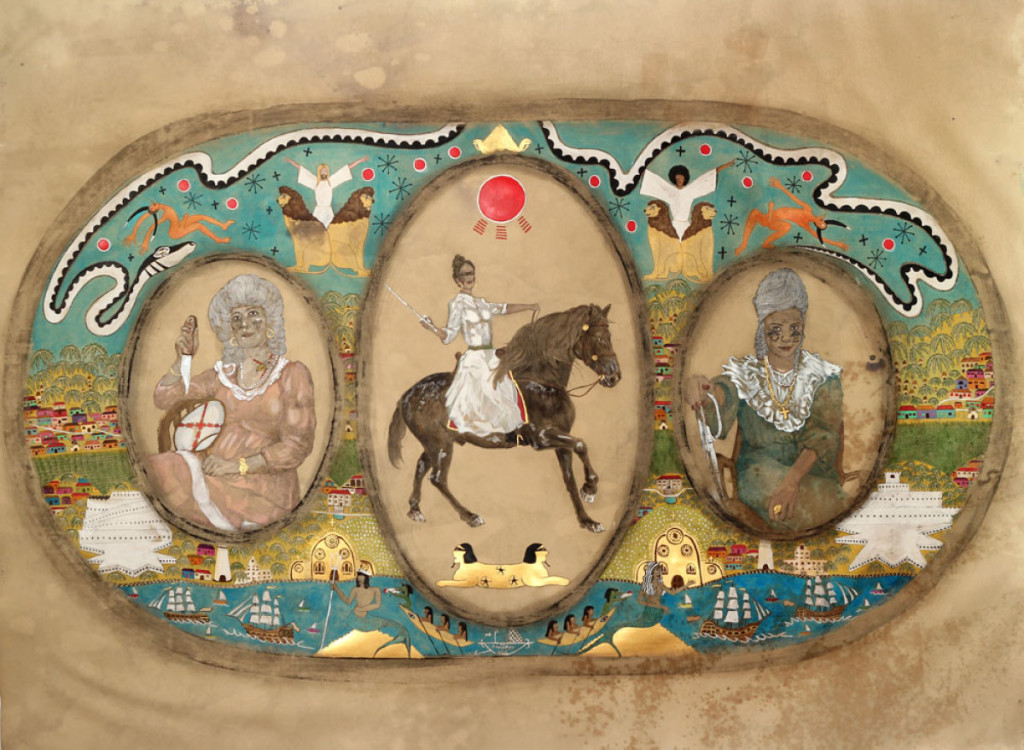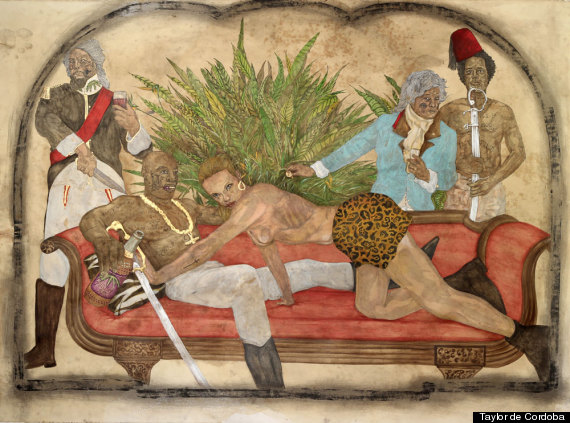
FROHAWK TWO FEATHERS
Rampjaar #tbt to that time when we didn’t let xenophobia get in the way of some sweet, motherfucking, payback. 1789.
[works on canvas and paper]
Cokkie Snoei, Rotterdam, both rooms, From 06-09-2015 on.
About:
Frohawk Two Feathers was born in 1976 in Chicago, Illinois, and currently lives and works in Los Angeles, California. He has had recent solo exhibitions at the Hudson River Museum (Yonkers, NY), the Wellin Museum of Art (Clinton, NY), the Visual Arts Center of New Jersey (Summit, NJ), the Nevada Museum of Art (Reno, NV), and the Museum of Contemporary Art (Denver, CO). In Fall 2014, Frohawk exhibited as a MATRIX artist at the Wadsworth Atheneum Museum of Art in Hartford, CT. Recent group shows include exhibitions at the Santa Barbara Museum of Art (Santa Barbara, CA), the Burlington City Arts (Burlington, VT), and Guerrero Gallery (San Francisco, CA). His work is in the collections of the Brooklyn Museum, Santa Barbara Museum of Art, the Progressive Collection, 21C Museum, the Nevada Museum of Art, and the Wellin Museum of Art, among others. Major publications that have reviewed his work include Art in America, The New York Times and The Los Angeles Times.
Frohawk Two Feathers, whose pseudonym comes from his Native American and African American background, has fused that heritage and created an entire universe that re-imagines 18th-century colonial history. “He saw his heritage, which is often mired in slavery or this subservient reading, as one that could now be royalty re-imagined in a more positive, empowered light—with the premise that France and England were not competing imperial powers, but that they were combined as Frangland, and that they are competing against New Holland, this kind of Scandinavian hybrid,” says Matijcio. “He’s not creating this totally artificial myth; they are based upon actual events, but a lot of his characters are exaggerations or amplifications or alternates. He’s referencing actual histories and translating them into this larger fable. It’s very involved. They all live inside his mind and they’re continually being reformulated and respoken. What’s so interesting about his work is that he’s not only looking at 18th-century colonial portraiture, folk art, but he’s fusing that with hip hop, with street art, with Basquiat, with more contemporary-modern practices to create these hybrid characters. You look at their faces and they have what he calls an imperial tattoo system, that’s kind of based on prison culture.”



